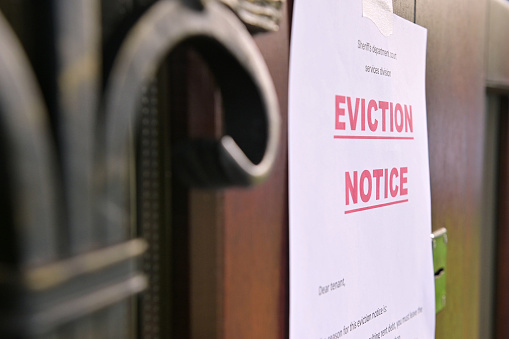The federal eviction moratorium has been extended another month, with an end date of July 31, 2021. The CDC says this will be the last time the moratorium will be extended, however, some states (like California) have extended the moratorium even longer. While evictions can still take place under some circumstances, all evictions based on nonpayment of rent or other fees are prohibited.
Although you may not be able to pursue eviction at this time, there are some steps you can take to mitigate the financial impact of tenant defaults.
Look into Rental Assistance for Your Tenants
Although the CDC doesn’t provide rental assistance for tenants, you may consider researching the U.S. Department of Housing and Urban Development’s (HUD) emergency grants and other programs to see if there’s one your tenant might qualify for.
Likewise, check locally to see if there are any types of rental aid in place; some areas have also been offering rent vouchers or emergency funds to tenants in need of assistance. There are currently many resources available to help renters, so it may be in your best interest to research these options and bring them to your tenants’ attention – do what you can to help them pay you.
Here are some additional resources that may help.
Work Out a Temporary Solution with Your Tenants
Depending on how much you rely on rental income from your tenants, you have a few options for working with those who have fallen behind on their rent:
- Forgive rent. If your financial situation allows it, and you’re willing, you could waive rent for a month, with an agreement to revisit the payment arrangement in the future.
- Postpone rent and offer payment plans. You could offer to postpone rent for a designated period of time, with an agreement that the rent will be repaid. In your repayment agreement, make sure to state whether the payments for the rent owed can be spread out over time, paid all at once, or paid back when they receive a stimulus or other form of financial aid.
- Reduce the rent. In some cases, lowering the rent may be a good option for you and your tenant. This will allow the tenant to meet some of their financial obligations to you while providing you with some income to handle your expenses. For example, if you normally collect $1,200 a month for rent, but your mortgage is $900, you could temporarily lower the mortgage to $900 so you can continue to pay your lender. You may not be able to make a profit this way, but it can help you avoid defaulting on your mortgage.
Keep in mind, though, that a rent reduction is permanent. This means future rent increases must be based on the lowered amount, which becomes the new base rent. In addition, landlords aren’t allowed to withdraw or cancel the reduction at a later date. In areas with rent control, you’ll only be able to raise the rent according to the set increase rate and market conditions.
In California, for example, this would mean you could only enact a 5% rent increase plus the annual CPI (Consumer Price Index) percentage change. Depending on how much you lower the rent and where your property is located, it could take some time to be able to raise the rent back to its previous price.
Before you decide to make any of these changes, talk to your tenants and ask them what they think would work. If you can accommodate their suggestions, there’s a better chance they’ll work harder to uphold their end of the bargain. Whatever is decided, make sure to put it in writing (preferably as an addendum to your lease or rental agreement) and have the tenant sign it.
Offer to Let Tenants Out of Their Lease
If carrying a non-paying tenant has become too much of a hardship, you can offer to let them out of their lease early and without penalty – including the back rent – if they agree to leave by a designated time. If they don’t want to leave, gently remind them that they will continue to owe all the back rent they haven’t paid.
Cash for Keys
If your finances allow it, you may be able to pay your tenant to leave. Known as “cash for keys,” this can be an effective method when you want a tenant to leave as soon as possible. Explain to the tenant why you’d like them to move and offer them a lump-sum to move out as soon as possible. The lump-sum amount should generally be based on the average cost of rent in the area. If the tenant agrees, write up an official agreement outlining the terms, and make sure you and the tenant both sign it.
Continue Due Diligence for New Tenants
Hopefully, this has given you some ideas on how to deal with non-payment without resorting to eviction. If you have vacancies, it’s more important than ever to continue screening tenants to ensure that they’re in good financial standing before you choose to rent to them. Although circumstances can change, screening continues to be the best protection against future nonpayment.
Landlords Property Managers Contact TSCI
